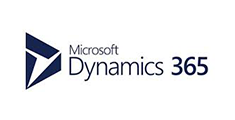Streamlining Team Collaboration with Power BI: Shared Dashboards and Reports
WebSiteAdmin, October 15, 2024406 Views
In today’s fast-paced business environment, effective collaboration among team members is essential for making informed decisions. One powerful tool that can enhance collaboration is Power BI by Microsoft. In this guide, we’ll explore how Power BI can streamline team collaboration through shared dashboards and reports, even for those who may not be tech-savvy.
Why Use Shared Dashboards and Reports?
- Improved Communication: When teams share dashboards and reports, everyone is on the same page. This transparency fosters better communication and ensures that all team members have access to the same information. Instead of sifting through endless email threads or waiting for meetings, team members can quickly refer to shared dashboards for updates and insights.
- Enhanced Decision-Making: Shared dashboards enable teams to make data-driven decisions. With real-time data visualization, decision-makers can spot trends, identify opportunities, and react swiftly to challenges. This not only speeds up the decision-making process but also reduces the risk of errors that can arise from relying on outdated or inaccurate information.
- Increased Accountability: When everyone has access to the same dashboards and reports, it promotes accountability within the team. Team members can track progress on projects, monitor key performance indicators (KPIs), and see how their contributions impact overall goals. This clarity motivates individuals to stay focused and engaged.
Getting Started with Shared Dashboards in Power BI
Now that we understand the benefits of shared dashboards, let’s explore how to get started with Power BI:
Step 1: Create Your Dashboard
- Choose Your Data Source: Power BI allows you to connect to various data sources, such as Excel spreadsheets, databases, or cloud services. Select the data that is relevant to your team.
- Build Your Visuals: Use Power BI’s intuitive interface to create charts, graphs, and tables. The drag-and-drop functionality makes it easy to customize visuals to suit your needs.
- Organize Your Dashboard: Arrange your visuals in a logical layout that tells a clear story. Group related information together to make it easy for team members to navigate.
Step 2: Share Your Dashboard
- Publish to Power BI Service: Once your dashboard is ready, publish it to the Power BI Service. This cloud-based platform allows you to share your work with others.
- Set Permissions: Decide who can view or edit the dashboard. You can grant access to specific team members, departments, or even external stakeholders if necessary.
- Collaborate in Real-Time: Team members can now access the dashboard from anywhere, on any device. They can leave comments, ask questions, and collaborate in real-time.
Step 3: Create and Share Reports
Reports in Power BI provide a more detailed view of your data. Here’s how to create and share reports:
- Generate Reports from Dashboards: Use the data from your dashboards to create comprehensive reports. Power BI allows you to drill down into specifics, providing deeper insights.
- Share Reports via Email: You can send reports directly to team members through email. They can view the report without needing a Power BI account.
- Schedule Automatic Updates: Keep your reports fresh by scheduling automatic data refreshes. This ensures that your team always has access to the latest information.
Best Practices for Effective Collaboration
- Encourage Feedback: Foster a culture where team members feel comfortable providing feedback on dashboards and reports. This will help you continuously improve the tools you use.
- Keep It Simple: Avoid overwhelming team members with too much information. Focus on the key metrics that matter most to your team.
- Training and Support: Offer training sessions to help team members familiarize themselves with Power BI. This will boost confidence and encourage more widespread adoption.
Conclusion
Power BI is a valuable tool for enhancing team collaboration through shared dashboards and reports. By providing clear visual insights, it improves communication, boosts decision-making, and fosters accountability. With just a few simple steps, even those who are not tech-savvy can leverage Power BI to transform their data into actionable insights.
As a key decision-maker, embracing Power BI can help your team become more agile, informed, and connected. Start your journey today and unlock the potential of data-driven collaboration!












